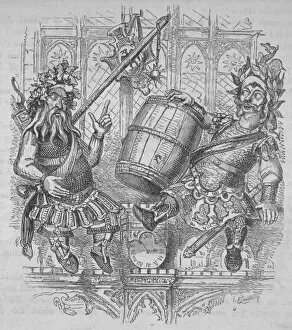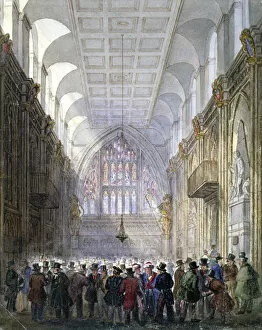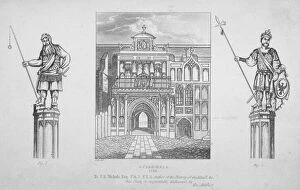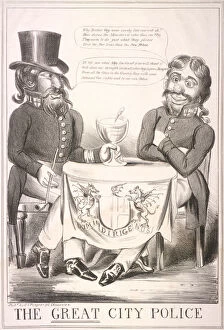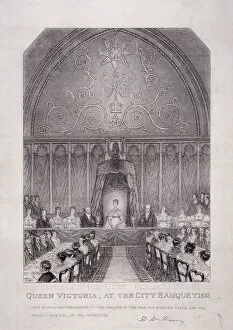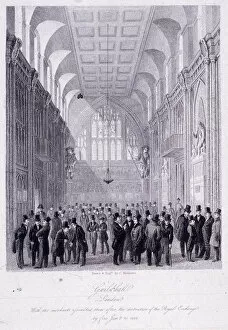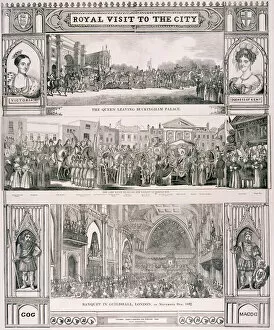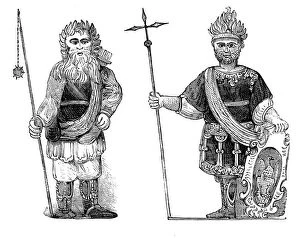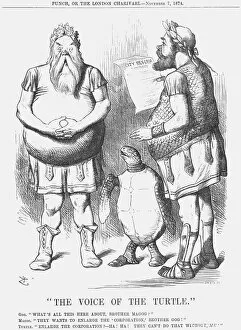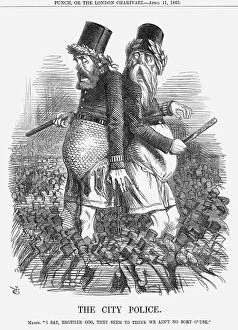Majuj Collection
"Majuj: Unveiling the Timeless Legends and Vibrant History of Guildhall
For sale as Licensed Images
Choose your image, Select your licence and Download the media
"Majuj: Unveiling the Timeless Legends and Vibrant History of Guildhall, London" Step into the enchanting world as we delve into the captivating tales surrounding Guildhall, a place steeped in history. From St. Dunstans Clock, an enigmatic creation from 1897 with its mysterious origins lost to time, to the awe-inspiring sight of Gog and Magog proudly displaying their solid attachments in "All a-Gog at Guildhall" in 1830. Ebenezer Landells' masterpiece "Gog and Magog with a barrel" transports us back to 1840 when these mythical giants graced the cityscape. As we explore further inside the majestic Guildhall through an artist's lens capturing its grandeur in 1838, we are reminded of its significance as a symbol of power and governance. Dating back even earlier to 1788, George Shepherd's depiction reveals Gog and Magog standing tall on either side of the Guildhall - guardians watching over this great city. The Great City Police depicted in all their glory during that same era remind us that order was maintained within these hallowed walls. Intriguingly titled "Civic anointing - or - the catastrophe of Lord Mayors Day, " this snapshot from 1827 offers a glimpse into dramatic events that unfolded within these historic halls. Brougham's encounter with Civic Giants adds another layer to Majuj's narrative as it unfolds before our eyes in 1848. Nathaniel Whittock immortalizes Queen Victoria's visit to City Hall in his artwork from 1837, capturing her grace amidst this iconic setting. Meanwhile, an illustrated songsheet from 1831 takes us on a melodic journey through time where stories were sung rather than spoken. Majuj invites you on an immersive experience where legends intertwine with reality; where each brushstroke tells a tale of Guildhall's rich heritage.



